July 22, 2016
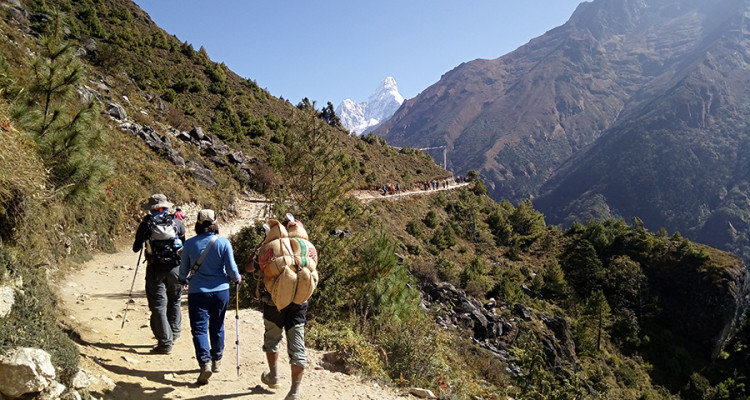
Monsoon trekking in Nepal can be a unique and exciting experience for adventure lovers who are willing to brave the rain and experience the lush greenery and breathtaking views of the Himalayas. Nepal is famous for its treks and hikes, but the monsoon season, which runs from June to September, is often considered a low season due to the wet weather.
Despite the challenges of trekking during the monsoon season, there are several reasons why it can be a great time to visit Nepal. The countryside is lush and green, and the rain brings out the natural beauty of the landscape. The waterfalls and streams are at their fullest, and the clouds often part to reveal stunning views of the Himalayas.
The monsoon season in Nepal typically starts from June and lasts until September. During this time, the country experiences heavy rainfall, particularly in the southern and central regions, including Kathmandu Valley. The monsoon season is caused by the moist air from the Bay of Bengal that brings heavy rainfall to the country.
While the monsoon season can make trekking and traveling in Nepal challenging, it also brings its own unique beauty to the country. The hills and mountains turn lush green, and the waterfalls and rivers are at their fullest. However, landslides and floods can also occur during this time, especially in remote areas, so it is important to take necessary precautions and follow weather updates and travel advisories.
If you plan to visit Nepal during the monsoon season, it is recommended to bring appropriate rain gear and footwear, and consider trekking in the drier regions such as Mustang, Dolpo, and Upper Manang. Additionally, some cultural festivals such as Teej and Janai Purnima are also celebrated during this time, offering a unique cultural experience.
Monsoon season in Nepal typically occurs from June to September, although it can start as early as May and continue into October. During this time, the country experiences heavy rainfall, especially in the southern regions and lower altitudes, which can lead to landslides, floods, and other hazards.
The monsoon season in Nepal is characterized by warm and humid weather, with temperatures ranging from 25 to 35 degrees Celsius in the lower altitudes. The higher altitudes, however, can still be quite chilly, with temperatures ranging from 10 to 20 degrees Celsius.
The monsoon season in Nepal is caused by the shift in wind patterns and atmospheric pressure, which brings moist air from the Indian Ocean to the subcontinent. The moisture-laden air rises over the Himalayas, causing heavy rainfall in Nepal and the surrounding regions.
While monsoon season can be challenging for trekking and outdoor activities, it is also a time of great natural beauty, with lush greenery and spectacular waterfalls. Some trekkers prefer to trek during monsoon season to experience the country’s natural beauty in a unique way, although it is important to be prepared for the challenges and risks that come with trekking during this time.
Overall, the monsoon season in Nepal is a vital part of the country’s ecosystem and culture, and is an important time for agriculture and irrigation. While it can present challenges for travel and outdoor activities, it is also a time of beauty and renewal in the Nepalese landscape.
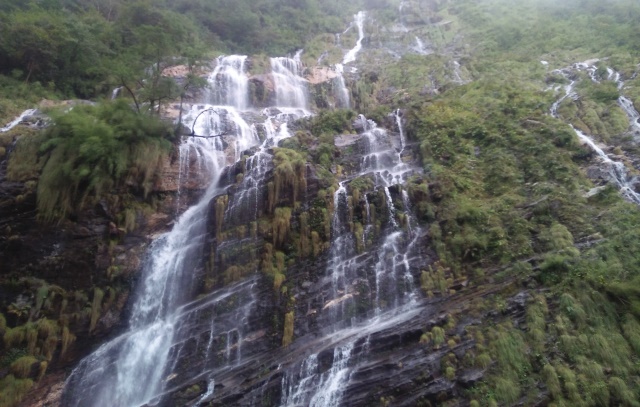
Natural waterfall along the trails
Trekking in Nepal during monsoon season can have its advantages. One of the biggest advantages is that the trails are less crowded, allowing for a more peaceful and serene trekking experience. Additionally, the countryside is lush and green during this time, making for stunning scenery and unique photo opportunities. The heavy rainfall also clears the air of dust and pollution, resulting in clearer views of the mountains and surrounding landscapes.
Trekking during monsoon season can also be less expensive, as many tour companies offer discounted rates due to the decrease in demand. Furthermore, the precipitation levels can make for cooler temperatures and a more pleasant trekking experience in the lower altitudes.
However, it is important to note that trekking during monsoon season does come with certain risks, including landslides and potential flooding. It is crucial to prepare and plan accordingly, and to be aware of potential hazards along the trail.
Trekking in Nepal during monsoon season can be a rewarding experience, but it also presents some challenges, including staying dry and avoiding leeches. Here are some tips to help you stay comfortable and protected:
By following these tips, you can stay dry and avoid leeches while trekking in Nepal during monsoon season, and enjoy a safe and rewarding adventure in the beautiful Nepalese landscape.
Some popular monsoon treks in Nepal include:
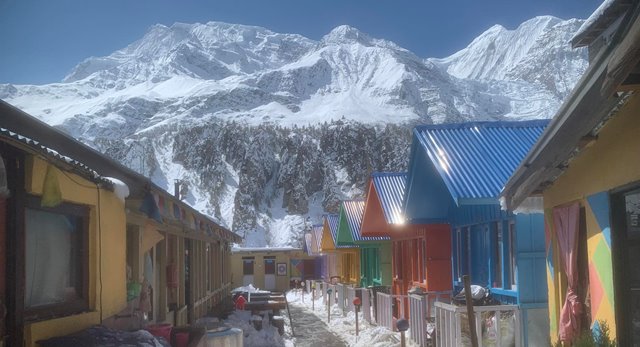
Tea House at Annapurna circuit trek
The Annapurna Circuit Trek is a popular trekking destination in Nepal, known for its scenic beauty and diverse landscape. While the best time to trek the Annapurna Circuit is during the Spring (March to May) and Autumn (September to November) seasons, many trekkers choose to trek during the monsoon season (June to August).
Trekking during the monsoon season can offer unique experiences as the landscape around the Annapurna region is lush and green, with blooming rhododendrons, wildflowers, and green foliage. The mountains may not be as clear as during the Autumn season, but the atmosphere is peaceful, and the crowds are minimal. The temperatures are also warmer during the monsoon season, making it more comfortable for trekkers to trek during the day.
However, trekking during the monsoon season also has its challenges. The monsoon rains can cause landslides, making the trekking trails slippery and challenging to navigate. Trekkers need to be extra cautious during this time and make sure they have proper equipment and gear, including waterproof jackets, boots, and trekking poles. The trek may also take longer than usual due to the muddy and slippery trails.
Another challenge during the monsoon season is the presence of leeches in the forests. The wet and humid conditions of the monsoon season provide ideal breeding grounds for leeches. Trekkers need to be careful when walking through the forests and should wear protective clothing and use leech repellent to avoid leech bites.
It is also important to note that some parts of the Annapurna Circuit, especially the Thorong La Pass, may be closed due to heavy snowfall during the monsoon season. Trekkers need to be aware of the weather conditions and should have alternative plans in case of any trail closures.
In conclusion, trekking the Annapurna Circuit during the monsoon season can be a unique and rewarding experience. The lush and green landscape provides a different perspective of the region, and the crowds are minimal. However, trekkers need to be prepared for the challenges of the monsoon season, including heavy rainfall, slippery trails, and leeches. With proper preparation and precautions, trekking the Annapurna Circuit during the monsoon season can be an unforgettable adventure.
Major Highlights of Annapurna Circuit trek:
Itinerary:
Day 1: Drive from Kathmandu to Besisahar, then to Chame (2,710m)
Day 2: Trek from Chame to Pisang (3,300m)
Day 3: Trek from Pisang to Manang (3,540m)
Day 4: Rest day in Manang for acclimatization
Day 5: Trek from Manang to Yak Kharka (4,110m)
Day 6: Trek from Yak Kharka to Thorong Phedi (4,600m)
Day 7: Trek from Thorong Phedi to Muktinath (3,800m) via Thorong La Pass (5,416m)
Day 8: Trek from Muktinath to Jomsom (2,720m)
Day 9: Fly from Jomsom to Pokhara (827m)
Day 10: Drive from Pokhara back to Kathmandu
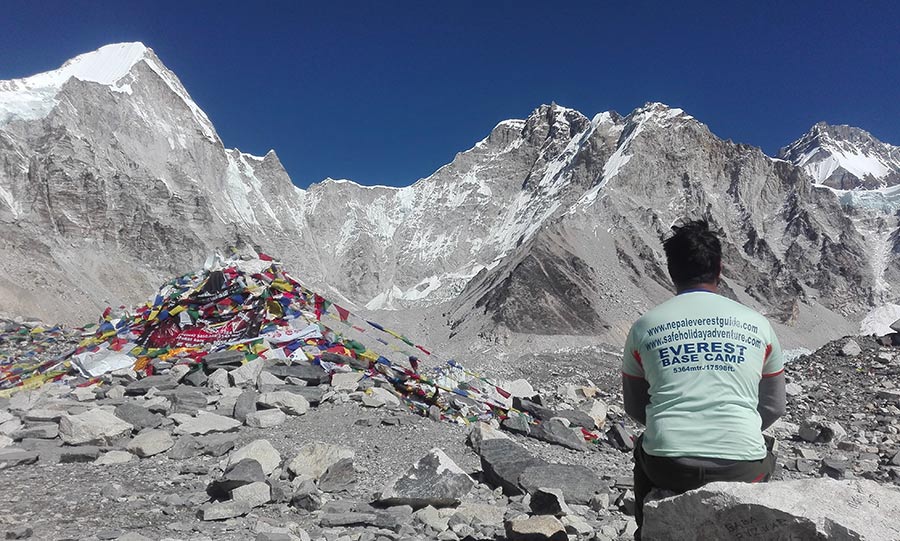
At Everest base camp
The Everest Base Camp Trek is one of the most popular trekking destinations in the world. While the best time to trek to the Everest Base Camp is during the Spring and Autumn seasons, many trekkers choose to trek during the monsoon season (June to August). The monsoon season brings heavy rainfall to the region, which can make trekking more challenging, but it also has its advantages.
During the monsoon season, the landscape around the Everest Base Camp is lush and green. The trekking trails are surrounded by blooming rhododendrons, colorful wildflowers, and green foliage. The mountain views may not be as clear as during the Autumn season, but the atmosphere is peaceful, and the crowds are minimal. The temperatures are also warmer during the monsoon season, making it more comfortable for trekkers to trek during the day.
However, there are some challenges that trekkers need to be aware of when trekking during the monsoon season. The monsoon rains can cause landslides and flash floods in the region, making the trekking trails slippery and challenging to navigate. Trekkers need to be extra cautious during this time and make sure they have proper equipment and gear, including waterproof jackets, boots, and trekking poles. The trek may also take longer than usual due to the muddy and slippery trails.
Another challenge is the presence of leeches in the forests. The wet and humid conditions of the monsoon season provide ideal breeding grounds for leeches. Trekkers need to be careful when walking through the forests and should wear protective clothing and use leech repellent to avoid leech bites.
In conclusion, trekking to the Everest Base Camp during the monsoon season can be a unique and rewarding experience. The lush and green landscape provides a different perspective of the region, and the crowds are minimal. However, trekkers need to be prepared for the challenges of the monsoon season, including heavy rainfall, slippery trails, and leeches. With proper preparation and precautions, trekking to the Everest Base Camp during the monsoon season can be an unforgettable adventure.
Itinerary:
Day 1: Fly from Kathmandu to Lukla (2,860m), trek to Phakding (2,610m)
Day 2: Trek from Phakding to Namche Bazaar (3,440m)
Day 3: Rest day in Namche Bazaar for acclimatization
Day 4: Trek from Namche Bazaar to Tengboche (3,870m)
Day 5: Trek from Tengboche to Dingboche (4,360m)
Day 6: Rest day in Dingboche for acclimatization
Day 7: Trek from Dingboche to Lobuche (4,940m)
Day 8: Trek from Lobuche to Gorak Shep (5,160m), hike to Everest Base Camp (5,364m), and return to Gorak Shep
Day 9: Hike to Kala Patthar (5,545m), then trek back to Pheriche (4,280m)
Day 10: Trek from Pheriche to Namche Bazaar
Day 11: Trek from Namche Bazaar to Lukla
Day 12: Fly from Lukla to Kathmandu
Major Attractions:
Breathtaking views of the Himalayan mountain range, including Mount Everest, Lhotse, Nuptse, Ama Dablam, and others. 2. Trekking through the Sagarmatha National Park, a UNESCO World Heritage Site and home to a variety of flora and fauna, including rhododendron forests and musk deer.
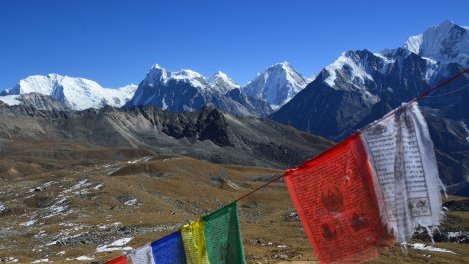
Langtang trekking is a popular destination for trekkers looking for an adventure in the Himalayas. It is an excellent option for those who are on a budget, as it is one of the most affordable treks in Nepal. There are different options available for trekkers, including a short Langtang trek that can be completed in 6 days. The Langtang trek starts in Sybrubeshi, a small town located in the Langtang region. From there, the trek follows the Langtang river through dense forests and high-altitude meadows. Trekkers will have the opportunity to see beautiful waterfalls and stunning views of the Ganesh Himal along the way.
One of the best things about the Langtang trek is that it can be easily customized to fit the needs of different trekkers. For those who have more time, the trek can be extended to include visits to nearby areas such as the Tamang Heritage Trail or Lake Gosainkunda. The Tamang Heritage Trail is a cultural trek that allows visitors to experience the unique culture and lifestyle of the Tamang people. Lake Gosainkunda, on the other hand, is a holy lake that is believed to have been created by Lord Shiva.
The Langtang trek is not only affordable but also offers stunning views of the Himalayas. Trekkers will have the opportunity to see snow-capped peaks and glaciers up close. They will also encounter unique flora and fauna along the way, including rhododendron forests and Himalayan black bears.
In conclusion, the Langtang trekking experience is an excellent option for budget-conscious trekkers who want to experience the beauty of the Himalayas. It is also an excellent choice for those who have limited time, as the short Langtang trek can be completed in just 6 days. The trek can be easily customized to fit the needs of different trekkers and can be extended to include nearby areas such as the Tamang Heritage Trail or Lake Gosainkunda. Overall, Langtang trekking is an unforgettable experience that offers stunning views, unique culture, and adventure in the heart of the Himalayas.
Best time to go to Langtang trek
The best time to go to Langtang trek is during the Spring (March to May) and Autumn (September to November) seasons. During these months, the weather is generally clear, and the skies are blue, offering trekkers excellent views of the surrounding mountains. The temperatures are also mild, making it comfortable for trekking during the day. The Spring season brings blooming rhododendron forests, while Autumn offers clear views of the mountains and landscapes. It is important to note that the Langtang region can be quite cold during the winter months, and monsoon rains can make the trekking trails slippery and challenging to navigate. Therefore, it is best to avoid trekking during the winter and monsoon seasons.
Major highlights of the Langtang Valley trek during monsoon season:
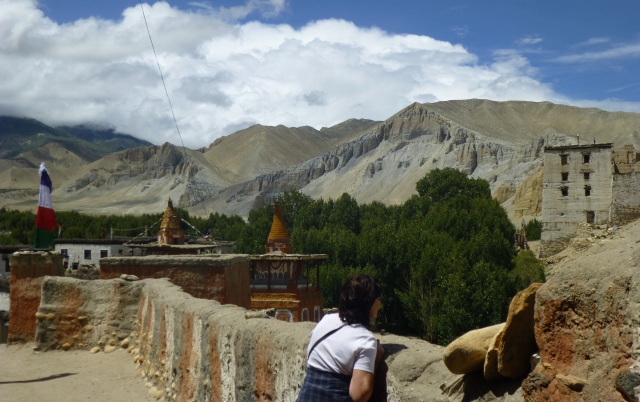
Beautiful Arid Land – On the way to Upper Loop of Mustang.
Upper Mustang is a remote and culturally rich region located in the northern part of Nepal. The region is known for its unique landscape, ancient monasteries, and traditional villages. Trekking in Upper Mustang during monsoon season (June to September) can be challenging, but it also offers some advantages.
Firstly, during the monsoon season, the Upper Mustang region receives less rainfall compared to other parts of Nepal. The rain shadow effect created by the Annapurna and Dhaulagiri ranges reduces the amount of rainfall in the region, making it possible to trek even during the monsoon season. However, it is essential to keep an eye on the weather forecast and be prepared for occasional rain showers.
Secondly, the monsoon season is considered an off-season for trekking in Upper Mustang, which means fewer crowds on the trail and more opportunities to explore the region in peace. The peaceful environment provides ample opportunities to learn about the local culture and interact with the locals.
However, trekking in Upper Mustang during the monsoon season also has some disadvantages. The trail can be muddy and slippery due to the rain, making it challenging to walk. The route may also be blocked due to landslides or floods, which can delay the trek. Therefore, it is essential to have a backup plan and be prepared to change the itinerary if necessary.
Another challenge of trekking in Upper Mustang during the monsoon season is the presence of insects and leeches. It is important to carry insect repellent and wear appropriate clothing to avoid bites.
In conclusion, trekking in Upper Mustang during the monsoon season can be an excellent experience for those who are prepared for the challenges. It offers a unique opportunity to explore the region without the crowds, learn about the local culture, and enjoy the beauty of the landscape. However, it is important to be prepared for occasional rain, muddy trails, and the presence of insects.
Itinerary:
Day 1: Fly from Kathmandu to Pokhara (827m/2713ft)
Day 2: Fly from Pokhara to Jomsom (2720m/8923ft) and trek to Kagbeni (2810m/9219ft)
Day 3: Trek from Kagbeni to Chele (3050m/10007ft)
Day 4: Trek from Chele to Syanbochen (3475m/11398ft)
Day 5: Trek from Syanbochen to Ghami (3520m/11548ft)
Day 6: Trek from Ghami to Charang (3500m/11483ft)
Day 7: Trek from Charang to Lo-Manthang (3700m/12139ft)
Day 8: Rest day at Lo-Manthang for acclimatization
Day 9: Trek from Lo-Manthang to Drakmar (3810m/12500ft) via Lo Gekar
Day 10: Trek from Drakmar to Ghiling (3570m/11712ft)
Day 11: Trek from Ghiling to Chhuksang (3050m/10007ft)
Day 12: Trek from Chhuksang to Jomsom (2720m/8923ft)
Day 13: Fly from Jomsom to Pokhara
Day 14: Drive or fly from Pokhara to Kathmandu
Major highlights of Upper Mustang trek during moon season in Nepal

Annapurna & Dhaulagiri Mountain Range
Ghorepani Poon Hill and Ghandruk trekking are two of the most popular trekking destinations in Nepal. These treks offer stunning views of the Annapurna and Dhaulagiri mountain ranges, along with unique cultural experiences. While the monsoon season (June to September) can bring occasional rainfall and muddy trails, trekking during this time also offers some advantages.
One advantage of trekking Ghorepani Poon Hill and Ghandruk during the monsoon season is the lush greenery and blooming wildflowers. The rain nourishes the vegetation, creating a vibrant and picturesque landscape. Trekking through the dense forests and rhododendron groves can be an enchanting experience during this time of year.
Another advantage is the fewer crowds on the trail. Since the monsoon season is considered an off-season for trekking, the number of tourists decreases significantly. This means you can enjoy the serene and tranquil atmosphere, connect with nature, and interact with the locals without the rush and hustle of peak season.
However, trekking during the monsoon season also has some challenges. The trails can be muddy and slippery due to the rainfall, making it harder to walk and increasing the risk of slips and falls. Trekking poles and appropriate footwear are recommended to prevent accidents. The rain can also cause landslides, blocking the trail, and potentially delaying the trek.
It is important to be prepared for occasional rainfall during the monsoon season. While it may not rain continuously, it is wise to carry waterproof gear, including raincoats and covers for backpacks, to keep your belongings dry.
Despite the challenges, Ghorepani Poon Hill and Ghandruk trekking during the monsoon season can be a rewarding experience. The stunning scenery, cultural experiences, and tranquil atmosphere make it worth the effort. It is essential to be prepared, take necessary precautions, and have a flexible itinerary to adapt to any unexpected situations. Trekking during the monsoon season can be a unique and unforgettable adventure, and it is a great way to experience Nepal’s natural and cultural wonders.
Trekking through lush forests of rhododendron and encountering a variety of wildlife, including monkeys and deer. 2. Reaching the scenic viewpoint of Poon Hill and enjoying panoramic views of the Annapurna and Dhaulagiri mountain ranges.
Itinerary:
Day 1: Drive from Pokhara to Nayapul (1070m/3510ft) and trek to Tikhedhunga (1540m/5052ft)
Day 2: Trek from Tikhedhunga to Ghorepani (2750m/9022ft)
Day 3: Hike to Poon Hill (3210m/10531ft) for sunrise view, and trek from Ghorepani to Tadapani (2590m/8497ft)
Day 4: Trek from Tadapani to Ghandruk (1940m/6365ft)
Day 5: Trek from Ghandruk to Nayapul and drive back to Pokhara
What to see during Ghorepani Ghandruk Trek?
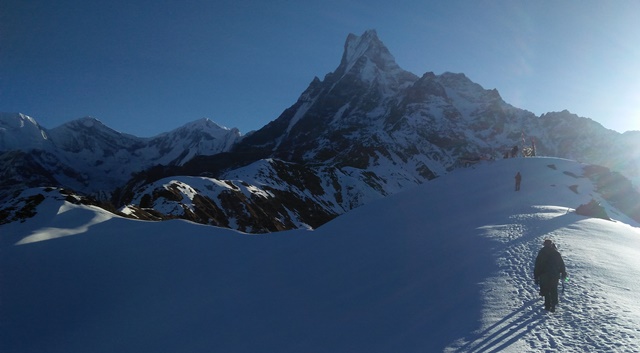
Way to Mardi Himal View Point
Mardi Himal Trek is one of the newest and less crowded treks in the Annapurna region of Nepal. This trek offers a perfect combination of stunning mountain scenery, diverse landscapes, and cultural experiences. It is a relatively short trek that can be completed in 5 to 7 days, and it is suitable for trekkers of all levels.
The Mardi Himal Trek starts from the beautiful city of Pokhara and follows a path that passes through traditional villages, lush forests, and alpine meadows. The trek offers breathtaking views of the Annapurna Massif, including Machhapuchhre (Fishtail), Annapurna South, Hiunchuli, and Mardi Himal. The trek also offers a chance to explore the traditional lifestyles, culture, and hospitality of the local Gurung and Magar communities.
One of the highlights of the Mardi Himal Trek is the Mardi Himal Base Camp, which is located at an altitude of 4500 meters. The base camp offers a spectacular panoramic view of the Annapurna Range, Dhaulagiri, and Manaslu. The trek also offers a chance to witness the diverse flora and fauna of the region, including rhododendron forests, oak trees, and different species of birds and animals.
The Mardi Himal Trek is a relatively quiet and peaceful trek compared to other popular treks in the region. The trek is not as crowded as the Annapurna Base Camp or Ghorepani Poon Hill treks, which allows trekkers to have a more tranquil and authentic experience. The trek also provides a chance to escape the crowds and connect with nature, making it an ideal option for trekkers who prefer solitude and seclusion.
Overall, the Mardi Himal Trek is a fantastic option for trekkers looking for a short and less crowded trek that offers stunning mountain scenery, diverse landscapes, and cultural experiences. The trek offers a chance to witness the natural beauty of the Annapurna region while experiencing the hospitality of the local communities. The Mardi Himal Trek is a perfect blend of adventure, culture, and nature, making it a unique and unforgettable trekking experience in Nepal.
Itinerary:
Day 1: Arrival in Kathmandu
Day 2: Kathmandu to Pokhara (910m) by bus or flight (25 min). Overnight in Pokhara.
Day 3: Drive from Pokhara to Phedi (1,130m), and trek to Pothana (1,990m).
Day 4: Trek from Pothana to Forest Camp (2,600m).
Day 5: Trek from Forest Camp to High Camp (3,550m).
Day 6: Hike to Mardi Himal Base Camp (4,500m) and back to High Camp.
Day 7: Trek from High Camp to Siding Village (1,750m).
Day 8: Trek from Siding Village to Lumre and drive to Pokhara.
Day 9: Rest day in Pokhara.
Day 10: Pokhara to Kathmandu by bus or flight (25 min).
Day 11: Departure from Kathmandu.
Note: The itinerary is subject to change based on the weather condition and the physical fitness of the trekkers.
During the monsoon season, the Mardi Himal Trek is challenging due to the heavy rainfall, leeches, and slippery trails. However, the scenery is lush green, and the trek is less crowded. Make sure to bring rain gear and trekking poles for stability.
Best of Mardi Himal trek:
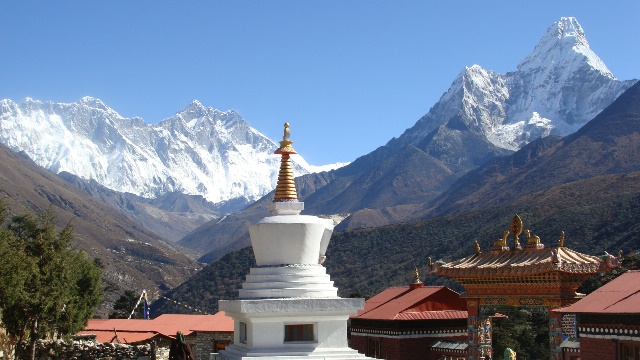
View of Everest from Tangboche hill
The Everest View Trek is a popular trekking route in the Everest region of Nepal, which is suitable for those who want to experience the breathtaking views of the world’s highest mountain, Mount Everest, but may not have the time or fitness level to complete a longer trek to the Everest Base Camp.
The 7-day Everest View Trek typically starts with a scenic flight from Kathmandu to Lukla, followed by a trek through beautiful Sherpa villages, dense forests, and alpine landscapes. The trek takes you to the villages of Namche Bazaar, Khumjung, and Tengboche, where you can experience the local culture and hospitality of the Sherpa people.
The highlight of the trek is the panoramic view of Mount Everest and other towering peaks, which can be seen from various viewpoints along the trek, including the famous Everest View Hotel, located at an altitude of 3,880 meters.
The trek is relatively short and can be completed by those with a moderate level of fitness, as the daily trekking duration is around 4-6 hours. However, trekkers should still be prepared for some steep ascents and descents, as well as potential altitude sickness.
Overall, the Everest View Trek is a great option for those who want to experience the beauty of the Everest region and see the world’s highest mountain, but may not have the time or fitness level for a longer trek.
Itinerary:
Day 1: Arrival in Kathmandu (1,400m/4,593ft)
Day 2: Kathmandu sightseeing and trek preparation (1,400m/4,593ft)
Day 3: Fly to Lukla and trek to Phakding (2,652m/8,700ft)
Day 4: Trek to Namche Bazaar (3,440m/11,286ft)
Day 5: Acclimatization day in Namche Bazaar (3,440m/11,286ft)
Day 6: Trek to Khumjung (3,790m/12,434ft)
Day 7: Trek to Tengboche (3,867m/12,684ft)
Day 8: Trek to Namche Bazaar (3,440m/11,286ft)
Day 9: Trek to Lukla (2,652m/8,700ft)
Day 10: Fly back to Kathmandu (1,400m/4,593ft)
Day 11: Departure from Kathmandu
Best things to observe during Everest View Trek
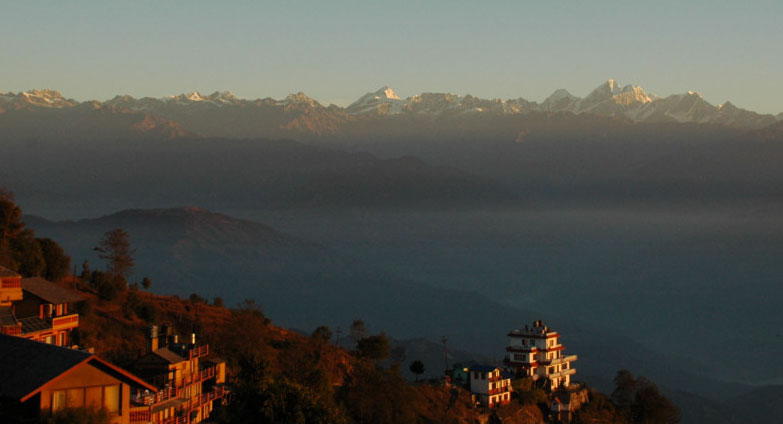
Nagarkot Hiking is a short and easy trekking route located near Kathmandu, Nepal, which offers stunning views of the Himalayan mountain range, including Mount Everest. The trek is typically completed in 3 days and is suitable for those who want to experience trekking in Nepal but have limited time or are new to trekking.
The trek starts with a drive from Kathmandu to Sundarijal, followed by a trek through the Shivapuri National Park, which is rich in flora and fauna. The trail takes you through dense forests, past waterfalls and streams, and through traditional villages, including Chisapani and Nagarkot.
The highlight of the trek is the panoramic view of the Himalayan mountain range, which can be seen from the hilltop of Nagarkot. The view is especially breathtaking during sunrise and sunset, and on a clear day, you can see Mount Everest and other towering peaks.
The trek is relatively easy and can be completed by those with a basic level of fitness. However, trekkers should still be prepared for some uphill and downhill sections, as well as potential altitude sickness.
Overall, the Nagarkot Trekking is a great option for those who want to experience trekking in Nepal, see stunning views of the Himalayan mountain range, and explore traditional villages and natural beauty, all within a short period of time.
Best of Nagarkot Hiking through Chisapani
Itinerary:
Day 01: Drive from kathmandu to Sundarijal then trek to chisapani.
Day 02: Trek from Chisapani to Nagarkot.
Day 03: Nagarkot to Changunarayan then drive to Kathmandu.
July is generally not the best time for trekking in Nepal due to the monsoon season. Nepal experiences heavy rainfall during the monsoon season (June to August), which can cause flooding, landslides, and make the trails slippery and difficult to navigate.
The monsoon season also means that the visibility is reduced, and the views of the mountains may be obscured by clouds and mist. Additionally, the trails can be affected by leeches, which can be uncomfortable for some trekkers.
However, it is still possible to trek in Nepal during July, particularly in the drier regions such as Upper Mustang and Upper Dolpo. These regions are located in the rain shadow area and receive very little rainfall during the monsoon season.
If you decide to trek in Nepal during July, it is important to be well-prepared and to choose the right gear, including waterproof clothing and sturdy trekking boots. You should also plan your trek carefully, taking into account the weather and potential trail closures due to landslides.
Overall, while it is possible to trek in Nepal during July, it is not the best time for most trekking routes due to the heavy rainfall and potential hazards. If you do choose to trek during this time, it is important to plan carefully and take the necessary precautions to ensure a safe and enjoyable experience.
Nepal is a breathtakingly beautiful country known for its towering Himalayan mountains, stunning landscapes, and unique culture. August is a popular time to trek in Nepal, although it can be challenging due to the monsoon season. Despite the rain, trekking in August can be rewarding as the forests and hillsides are lush and green, with wildflowers blooming everywhere.
One of the most popular trekking destinations in Nepal is the Annapurna region, which offers a range of trekking options, from easy walks to challenging high-altitude treks. The Annapurna Circuit Trek is a classic trek that takes you through a diverse range of landscapes, from lush subtropical forests to high-altitude deserts, and offers stunning views of some of the highest peaks in the world, including Annapurna and Dhaulagiri.
Another popular trekking destination in Nepal is the Everest region. While the trek to Everest Base Camp can be crowded, it’s still a bucket-list adventure that offers unparalleled views of the world’s highest peak. August is not the peak season for trekking in the Everest region, but it can still be a good time to go if you’re looking for a quieter experience.
No matter where you choose to trek in Nepal in August, it’s important to be prepared for the rain and mud. Make sure to bring proper rain gear and waterproof hiking boots, and be prepared to get wet. With the right attitude and gear, however, trekking in Nepal in August can be an unforgettable adventure that you’ll remember for a lifetime.
Trekking in Nepal during monsoon season can be a rewarding experience for those who don’t mind a little rain and mud. While some of the higher altitude treks may not be accessible due to the weather, there are plenty of lower altitude treks that offer beautiful scenery, lush green landscapes, and fewer crowds. Some popular monsoon season treks include the Annapurna Circuit, Langtang Valley, and Upper Mustang. However, it’s important to be prepared for the rainy weather and take appropriate precautions to ensure a safe and enjoyable trekking experience.